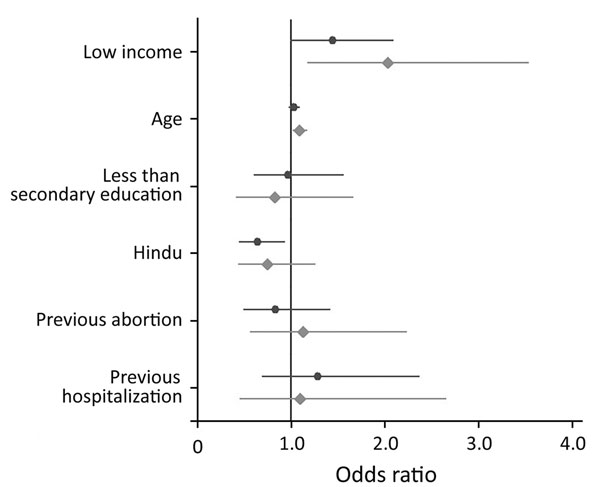Volume 24, Number 8—August 2018
Research
Poverty and Community-Acquired Antimicrobial Resistance with Extended-Spectrum β-Lactamase–Producing Organisms, Hyderabad, India
Figure 1

Figure 1. Adjusted odds ratios of bacteriuria and community-acquired antimicrobial resistance with ESBL-producing organisms by selected predictive variables for pregnant women in Hyderabad, India. Black dots represent odds ratios for bacterial growth in urine culture; lines indicate 95% CIs. Gray diamonds represent odds ratios for ESBL-producing organisms; lines indicate 95% CIs. The vertical line shows odds ratio = 1.0. ESBL, extended-spectrum β-lactamase.
Page created: July 17, 2018
Page updated: July 17, 2018
Page reviewed: July 17, 2018
The conclusions, findings, and opinions expressed by authors contributing to this journal do not necessarily reflect the official position of the U.S. Department of Health and Human Services, the Public Health Service, the Centers for Disease Control and Prevention, or the authors' affiliated institutions. Use of trade names is for identification only and does not imply endorsement by any of the groups named above.